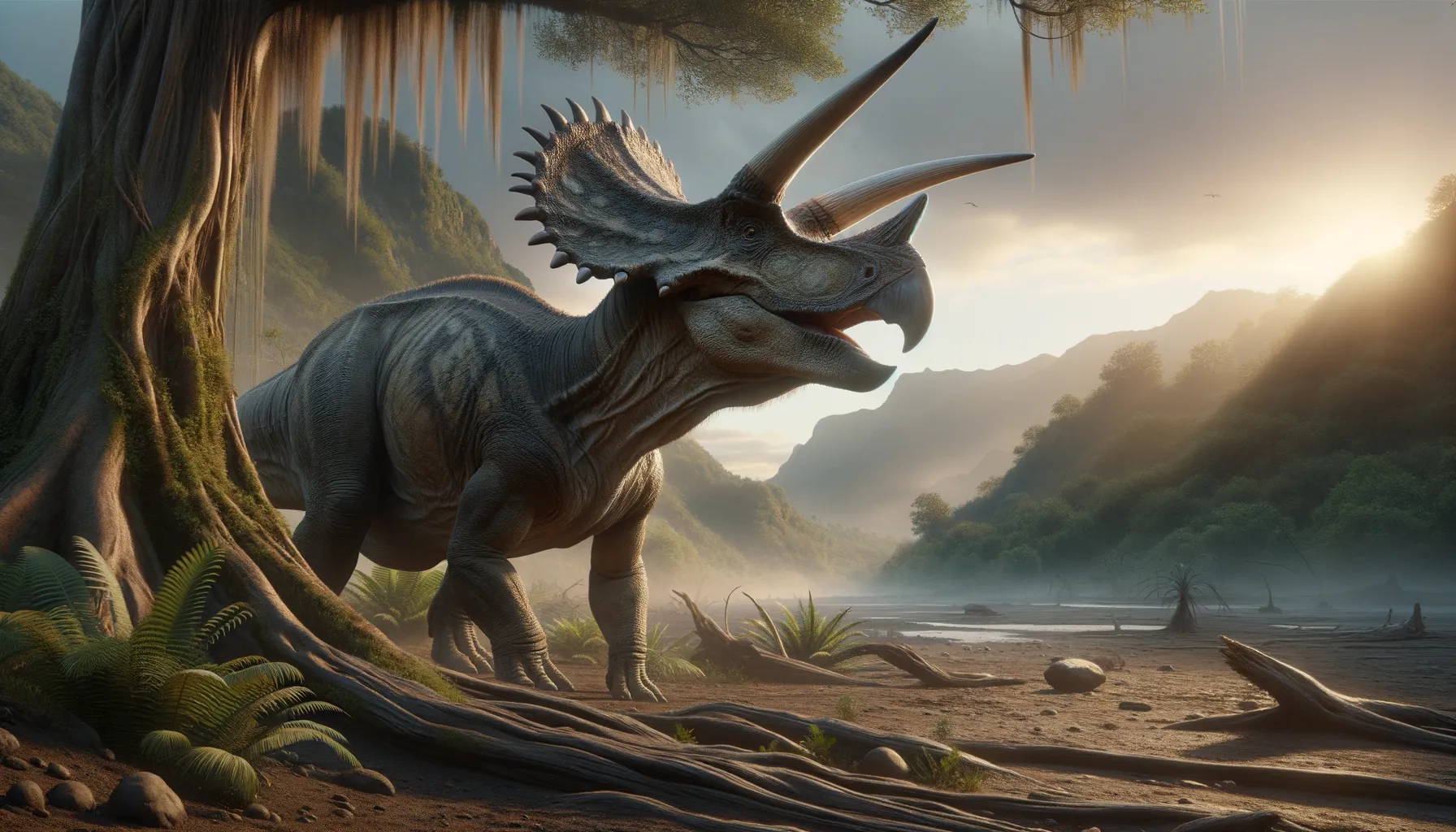
Polyonax
A giant with a horned and mighty face.
Period
Cretaceous
Length
Around 7 to 10 meters in length.
Height
Approximately 4 to 6 meters tall.
Weight
Estimated to weigh over a ton.
Polyonax was a ceratopsian dinosaur known for its large size and distinctive horned face. It roamed the land during the Late Cretaceous period, mainly intending to find plant material to consume. Though not much is widely known about Polyonax, its fossilized remains offer insights into the diverse dinosaur fauna that existed in prehistoric North America. It highlights the vast evolutionary adaptations of ceratopsians in different environments.
Diet
Polyonax was herbivorous, feeding primarily on ferns, cycads, and conifers. It likely used its sharp beak to clip vegetation efficiently.
Hunting
As a herbivore, Polyonax did not hunt other animals. Instead, it foraged within its habitat, relying on its size for protection against predators.
Environmental challenges
Polyonax faced various environmental challenges, such as seasonal changes that affected food availability. Its large size required a significant intake of vegetation, which could be challenging during droughts. Additionally, the presence of large predators likely influenced its behavior and movement patterns.
Speed
Polyonax was likely a slow-moving dinosaur.
Lifespan
Estimated lifespan of several decades.
First discovery
First discovered in the Late 19th century.
Fun Facts
- Polyonax is a dinosaur species that lived during the Late Cretaceous period.
- Its name 'Polyonax' means 'many claws,' highlighting its unique physical traits.
- Polyonax was discovered in what is now known as Colorado, United States.
- The first fossils of Polyonax were found in the 19th century, making it one of the earliest dinosaur discoveries in North America.
- Though there isn't much fossil evidence of Polyonax, it is believed to be a part of the ceratopsian family, related to horned dinosaurs like Triceratops.
- The incomplete fossil record means much about Polyonax is still a mystery to paleontologists.
Growth and Development
Polyonax likely went through a rapid growth phase during its early years to reach its enormous size. Its skeletons show evidence of bone structures that indicate development over a long period. As it grew, it developed its characteristic horns, which became more pronounced in adulthood.
Habitat
Polyonax inhabited areas that were rich in vegetation, such as forests and floodplains. These environments provided an abundant food source, which was crucial for its survival. The climate of the period supported diverse vegetation that sustained large herbivores like Polyonax.
Interaction with other species
Polyonax coexisted with various other dinosaur species, including both herbivores and carnivores. Its large size and group behavior likely offered protection from predators. It may have interacted with other ceratopsians, either through competition for resources or social behaviors.
Natural lifespan
Polyonax had a natural lifespan of several decades.
Reproduction
Polyonax likely laid eggs, as with other dinosaurs in its class. Its reproduction involved the laying and incubation of the eggs in carefully selected nesting sites to ensure survival. It is hypothesized that hatchlings were possibly cared for by adults in a group setting, increasing their survival chances.
Social behaviour
Polyonax is believed to have been social, possibly traveling in herds. Such behavior could provide advantages, such as protection and a collaborative approach to foraging. Herd living might have also assisted in raising young and fending off predators.
Fossil locations
Fossil remains of Polyonax have been primarily found in North America. The discovery sites provide important paleontological information, enriching our understanding of the distribution of ceratopsian dinosaurs. Such finds are crucial in understanding the geological and ecological history of the region during the Late Cretaceous.
